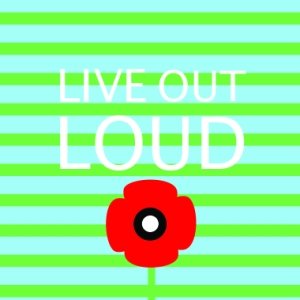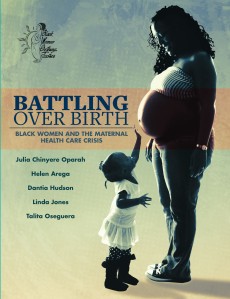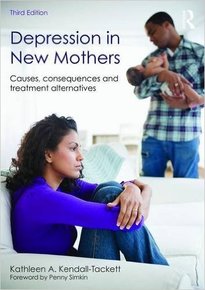Barbara Higham on how to sleep like a baby and why sleeping with her babies was a good experience.
When I was expecting a baby for the first time, I spent ages researching which crib mattress was considered the safest and most ergonomic on the market. The costly mattress I eventually chose boasted every advantage; even claiming to prevent the pooling of exhaled carbon dioxide that might be re-inhaled by the baby. I felt reassured by all I’d read and thought that the safety of my baby was virtually guaranteed; yet, as it turned out, the safety factor was not put to the test as he never spent a night on this precious mattress.
When Felix was born, he was rushed from me at the midwife-birthing center and away across London to hospital because he wasn’t breathing. When we were reunited several hours later, I never wanted to let him out of my sight again. We spent four days in the hospital. During this time I struggled to initiate breastfeeding and worried constantly while my baby underwent many intrusive tests. We were discharged “fully breastfeeding” although Felix had received a fair amount of formula through a naso-gastric tube. On returning home, the thought of putting him in a crib was simply unbearable. I spent every waking minute holding or watching him and I wasn’t going to abandon my guard in the night. I was keenly aware that my baby needed comfort and company at night as well as in the day, and I wasn’t going to let social conditioning stand in the way of meeting his needs. He didn’t seem to be aware of the trouble his father had gone to putting up nursery rhyme wall paper.

A baby needs to breastfeed during the night for many months and may need parental attention at night for years. It’s the rare baby who will sleep for more than a few hours at a stretch in the early weeks. Clearly parents have nighttime needs for sufficient sleep themselves. Parenting gurus sell a lot of books about how to prevent babies being so inconvenient. The fact they sell so many tells you all you need to know, which is actually very little. Mothers already have the answer and the magic knockout drops.
The impact of breastfeeding on sleep is considerable. It lowers maternal depression risk and a lot of mothers are vulnerable in this respect. On every parameter of sleep, exclusively breastfeeding mothers fare better than their mixed- or formula-feeding counterparts: they sleep more overall, take fewer minutes to fall asleep, are less tired in the day, and feel physically better. (Blyton, Sullivan, & Edwards, 2002; Doan, Gardiner, Gay, & Lee, 2007; Kendall-Tackett, Cong, & Hale 2011). When mothers supplement with formula, they lose the physiological benefit of breastfeeding on their sleep.

Worldwide and throughout history, mothers have found that breastfeeding has been made easier at night if they take their baby into bed and feed lying down. Both mother and baby sleep better this way.
Breastfeeding with bedsharing is one of the traditional ways of caring for an infant at night. (The term “bedsharing” implies a baby sharing an adult bed with one or both parents. The term “co-sleeping” implies a baby is sleeping in close proximity to an adult caregiver, not necessarily in the same bed.)
Sleeping with a baby may not suit every family. Some mothers prefer keeping a crib by the bed and bringing their babies into the bed when it’s time for a feeding. Some find that sitting up in bed to breastfeed works best for them in the early weeks. Babies often show strong preferences about where they do or do not want to sleep and parents tend to change their arrangements accordingly. An unsettled baby means disturbed nights for the whole family.
Proximity is what seems to make mothering at night easier because if her baby is near by, a mother can respond to his needs quickly and with the minimum amount of disruption to her (and her partner’s) rest.
With my first baby, breastfeeding was an uphill struggle and wasn’t fully established for some weeks. I gradually stopped following up nursing sessions with formula and persevered until my baby was able to latch and stay attached to the breast all the way through a feeding. Once we were breastfeeding exclusively, I still couldn’t (or didn’t want to) put Felix to sleep anywhere other than by my side. My partner felt much the same as I did, fortunately.
Whose problem?
While I was happy with the arrangement of sleeping with my baby, it was clear to me that it was seen as a problem by others. I lost count of the number of people who asked me, “Is he sleeping through the night yet?” Well, no he wasn’t, but we were getting plenty of sleep and his nighttime feeds were not disturbing us. Reactions were mixed, but I perceived that there was a common thread of disapproval. Some mothers shared with me that they too slept with their babies. I usually got the impression that this was something they felt they should not be doing, or even that it was a failure on their part not to get their babies to sleep alone. I wondered at times whether my need to keep my baby with me at night arose simply from my initial fears surrounding our early separation. My worries were overridden by the convenience of the arrangement. I needed my rest and simply couldn’t contemplate getting out of bed in the night to feed him! Since then, I’ve given birth another two times, at home, gently, with no upsetting separations, and have since shared a bed with each child, in turn.
What is normal?

In cultures that define solitary infant sleeping arrangements as ‘normal’, the ability of babies to sleep through the night and to soothe themselves back to sleep without parental intervention is viewed as a desirable developmental milestone. Sleeping alone is popularly regarded as the healthiest and safest form of infant sleep by both psychologists and parents, who assume that this practice promotes physiological and social autonomy. I don’t believe that babies were designed to sleep alone for long periods, along with many mothers who have trusted their instincts in child rearing. Cutting edge research challenges the validity of the common assumptions and validates what mothers feel naturally is good.
Professor James J. McKenna has examined the safety of different sleep environments as well as the physiological, neurological and psychological consequences of the different choices of sleeping arrangements parents make. He says:
Infants sleeping for long periods in social isolation from parents constitutes an extremely recent cultural experiment, the biological and psychological consequences of which have never been evaluated.
His latest research hypothesizes on the biological origins of sudden infant death syndrome (SIDS) and colic and conceptualizes a neuro-physiological model of the human infant’s breathing system that tries to account for our species susceptibility to SIDS and inconsolable crying (McKenna, Middlemiss, Tarsha, 2016).

Contact and proximity to his mother are vital to the infant’s biology.
Born with only 25 percent of adult brain volume, the human baby is neurologically the most immature infant primate of all, the slowest developing, and the most reliant on its mother for the longest period of time for physiological regulation and support. The composition of human milk (characterized by its low protein and fat content, and high lactose) necessitates short intervals between breastfeeds. Babies have tiny tummies and human milk is very easily and quickly digested.
The mother-baby dyad is functionally interdependent and this communication regulates the baby’s:
- body temperature
- breathing
- heart rate
- blood pressure
- hormone levels
- food intake and digestion
- ingestion of needed antibodies
- sleep cycles
James McKenna calls this “breastsleeping” and describes it as “a single, highly integrated bio-behavioral system representing the context within which normal, healthy human infant-maternal sleep and breastfeeding patterns (as well as respiration) evolved.” “There is no such thing as infant sleep, there is no such thing as breastfeeding, there is only breastsleeping” (McKenna & Gettler, 2015).
Babies sleep differently

There are two main states of sleep: rapid eye movement sleep (REM), known as active sleep (when dreams occur), and non-REM (or quiet) sleep. During REM sleep, the eyes may be partially open and moving and breathing is irregular. We pass from wakefulness through four stages of gradually deepening non-REM sleep before moving gradually back through the stages of non-REM sleep. The movement to and from REM sleep and back happens in cycles throughout the night.
The younger the human being, the greater the percentage of REM sleep. The period of life when humans sleep the most and the brain is developing the most rapidly is also when they require the most REM sleep. It appears that the predominance of active sleep in infants has developmental benefits. Infants have shorter sleep cycles than adults, with nearly twice as much REM sleep. Babies don’t crash into non-REM sleep in the way adults do; they have an initial REM period and a transitional period before entering quiet sleep during which they awaken easily, and so may appear difficult to settle or awaken more easily in the night.
The high percentage of REM sleep falls as babies mature. Breastfeeding your baby is a calming way to help him fall asleep, and is relaxing for a mother too—that’s part of the design. Enjoy it!
Unrealistic expectations
Babies can’t tell the time and have little concept of day and night, so it is unrealistic for parents to expect them to sleep for long stretches. If your baby wakes frequently and this is getting you down, remind yourself that he is doing only what is required for his brain to develop and so he can communicate his survival needs for frequent feeds. The formula-fed baby may perhaps sleep longer stretches, but the large amount of food he has taken in will put an unnecessary strain on his immature gut. As a baby grows, he will naturally adapt to the rhythm of life in his new environment and requires no prompting or training to do so.

A baby can’t be forced to sleep. No more can an adult. Babies are just little people. A lot of parents are left physically and emotionally exhausted by trying to sleep train their babies. A baby will drift in and out of sleep as his body requires it, but it is not uncommon for sleep (like food) to become a battleground. Popularly, babies are looked at as manipulators, and pandering to their cries will ‘spoil’ them. It is not possible to show a baby too much affection and new research shows it is damaging to leave babies to ‘cry it out’.
Recent studies have shown that breastfeeding increases babies’ physical and mental well-being, and these effects go well beyond the composition of the milk. Maternal responsiveness is key to understanding these long-term effects. When mothers consistently respond to their babies’ cues, they set the stage for lifelong resiliency in their offspring. And responsiveness is built into the breastfeeding relationship. We see this reflected in children’s mental health. (Kendall-Tackett, 2017)

Nursing her baby at bedtime can help a mother to let go of the day’s cares (hormones help here) and, if she doesn’t drift off to sleep, will leave a woman in a relaxed mood to spend some time how she wishes, once the baby is asleep. Lactation actually suppresses the body’s hormonal response to stress, which leaves a mother more able to cope with whatever life throws at her during the time she is breastfeeding.
If only we knew how not to battle. We need to rediscover what families throughout history have known instinctively—how to offer children complete security, so that they can grow and develop in confidence …. If we are always pushing our children away, they will return, clinging, for many years to come (Jackson, 2003).

Fathers benefit from sleeping with their babies, too, because the closeness aids the bonding process and who wants to take a turn preparing bottles in the middle of the night? Welcoming a baby into the parental bed makes a child feel that his needs are important at night as well as in the day and adds to his developing sense of self-esteem. Sleeping in bodily contact with a baby enables him to feel at ease with human touch, which, in turn, allows him to grow up feeling at ease with his own body.
Touching, cuddling, skin-to-skin contact, and falling asleep together are comforting to both mother and baby. Tactile stimulation is greatly increased when a mother sleeps next to her baby. Allan N. Schore, a researcher in the field of neuropsychology, writes:
Maintenance of critical levels of tactile input of specific quality and emotional content is important for normal brain maturation (Schore, 2001).
Modern baby care is often lacking in physical contact. Babies are placed in seats, prams, and cribs. Yet, for the newborn, human touch may be “the only stabilizing force in a world that is at once foreign and frightening” (Jackson, 2003). Studies have shown that when babies are deprived of physical contact, they are more likely to grow into aggressive adults.
Although a worry for some parents, sleeping babies are oblivious to their parents’ lovemaking. There is no need for babies to put a stop to sexual relations. It is vital to talk about any ambivalent feelings with your partner.
Safety

Some authorities continue to advise parents that, whatever the circumstances, placing a baby to sleep in a cot by the bed is safer than bedsharing. Such “one-size-fits-all” advice does not take into account important differences between families, in particular whether a baby is exclusively breastfed. These warnings, along with pressure from family and friends, may cause some parents to stop sharing sleep with their babies.
Protective
While no sleeping environment can be entirely risk free, studies have found that mothers who sleep with their breastfed babies in bed adopt a protective position that makes over-laying difficult, and smothering by pillows or bedding unlikely. Babies “demonstrably do not overheat in this situation” (Ball, 2006) and they breastfeed more successfully and for longer, which has significant health benefits for mother and child (Wailoo et al., 2004; Gettler & McKenna, 2010).
When a mother lies down with her breastfed baby, her knees come up and her lower arm tucks up under her head or pillow, or down to wrap around her baby—not all mothers find it as comfortable to rotate their arm as they do to move it up. In this way her body creates a protected space for the baby. There’s no way a mother can roll towards her baby because her bent legs prevent this from happening. No one else can roll into the baby because the mother’s knees and elbows are in the way. Even during sleep, a breastfed baby will instinctively stay with his face near the breast and roll on to his back when he is not feeding.
Infant sleep researchers have questioned the warnings not to bed share. Their research shows that when parents share sleep safely with their infants, babies thrive.
Researchers (Blair et al., 2014) examined data missing from other SIDS research,
on drug and alcohol use. What they found was that not only is there no significant risk to an infant if he bedshares in the absence of hazardous factors, but that after three months bedsharing could be protective.
Hazardous factors include:
- the mother having smoked during her pregnancy
- the infant sleeping prone
- non-routine bedsharing
- the infant sleeping in bed with a drug-desensitized adult
- sleeping alongside an unrelated male
- the infant sleeping on a soft mattress or sofa
- any sleep surface in which another child or other children are sleeping
These show up in numerous studies as significant independent risk factors for SIDS, as well as formula feeding.
Mothers often find it difficult to stop themselves falling asleep while breastfeeding. The hormonal effects of suckling a baby can cause a mother to doze off even if she isn’t lying down in bed at the time. It is better that parents take steps to increase the safety of bedsharing than chance falling asleep in more risky places (such as on the sofa). By about four months, any responsible adult can bedshare as safely as a responsible breastfeeding mother.
Because bedsharing can double and even triple the number of breastfeeds per night, along with extending the period a mother breastfeeds, the resultant benefits conferred are not trivial (Gettler & McKenna, 2010). They potentially include increased protection from a variety of sometimes fatal infantile diseases and conditions in addition to SIDS. This protection is dose dependent: that is, the more the baby breastfeeds, the greater the protection he receives. It makes no sense to discourage safe bedsharing when it is known to increase the intensity and duration of breastfeeding.
Sharing sleep with your baby when he is unwell helps you to care for him more easily. You can tell straight away whether his temperature is soaring or whether he is shivering. Babies commonly want to stay attached to the breast for long periods when they are feeling poorly, and it is more restful for mother, dad, and baby to sleep in the same bed.
The instinct to keep your baby close at night is powerful. Co-sleeping is often the last practice to be abandoned by non-Western people. Some cultures that have started to adopt the Western practice of placing infants alone in cribs to sleep and enforcing sleep training programs are now experiencing SIDS for the first time.
Moving out and on
I did fret that we’d have difficulty getting my first son to move into his own bed, but I needn’t have worried. The transition was an easy one and made without tears. He assumed his independence to sleep alone once he was ready for it, and I remember how thrilled he was choosing dinosaur print bedding for his own bed. My second son took a longer period of transition, which involved my sleeping with his baby sister on a mattress in his room so he could climb in if he needed company in the night. This only lasted for a brief period. I think my partner thought I was being a little indulgent at the time, but he has since agreed that the arrangement worked well. Our third spent even longer with us, but she has grown with none of the nighttime anxieties that occur so frequently in many primary school-age children.
Nighttime mothering can be intensive—you have to be there—but what part of parenting isn’t quite demanding? What a gift to be able to give to someone, simply by being there! This period is soon past, and it’s time well invested in long-term health and emotional security.
Peace and privacy are, believe it or not, important to children, too. But one vital quality of privacy is that we take it when we choose, otherwise it’s called loneliness (Jackson, 2003).
Sweet dreams!
References

Ball, H.L. (2006). Parent-Infant Bed-sharing Behavior: effects of feeding type, and presence of father. Human Nature: an interdisciplinary biosocial perspective 17(3): 301–318. See too: ISIS Infant Sleep Information Source. doi:10.1007/s12110-006-1011-1
Blair, P. S., Sidebotham, P., Pease, A., & Fleming, P. J. (2014). Bed-sharing in the absence of hazardous circumstances: Is there a risk of sudden infant death syndrome? An analysis from two case-control studies conducted in the UK. PLoS ONE, 9(9), e107799. doi:10.1371/journal.pone.0107799
Blair P.S., Heron J., Fleming P.J. (2010). Relationship between bed sharing and breastfeeding: longitudinal, population-based analysis. Pediatrics, 126(5) e1119–e1126. doi:10.1542/peds.2010-1277
Blyton, D. M., Sullivan, C. E., & Edwards, N. (2002). Lactation is associated with an increase in slow-wave sleep in women. Journal of Sleep Research, 11(4), 297–303. doi:10.1046/j.1365-2869.2002.00315.x

Doan, T., Gardiner, A., Gay, C. L., & Lee, K. A. (2007). Breastfeeding increases sleep duration of new parents. Journal of Perinatal & Neonatal Nursing, 21(3), 200–206. doi:10.1097/01.jpn.0000285809.36398.1b
Gettler, L. T., & McKenna, J. J. (2010). Evolutionary perspectives on mother-infant sleep proximity and breastfeeding in a laboratory setting. American Journal of Physical Anthropology, 144(3), 454–462. doi:10.1002/ajpa.21426
Jackson, D. (2003). Three In A Bed: The Benefits of Sleeping with Your Baby. London, England: Bloomsbury, pages 35, 257.
Kendall-Tackett, K. A., Cong, Z., & Hale, T. W. (2011). The effect of feeding method on sleep duration, maternal well-being, and postpartum depression. Clinical Lactation, 2(2), 22–26.

Kendall-Tackett, K.A. (2017). Neuroscience shows breastfeeding is not just milk. Women’s Health Today. womenshealthtoday.blog
McKenna, J. J., & Gettler, L. T. (2015). There is no such thing as infant sleep, there is no such thing as breastfeeding, there is onlybreastsleeping. Acta Paediatrica, 105(1), 17–21. doi:10.1111/apa.13161
McKenna, J. J., Middlemiss, W., & Tarsha, M. S. (2016). Potential evolutionary, neurophysiological, and developmental origins of sudden infant death syndrome and inconsolable crying (colic): Is it about controlling breath? Family Relations, 65(1), 239–258. doi:10.1111/fare.12178
 Schore, A. (2001). The effects of a secure attachment relationship on right brain development, affect regulation, and infant mental health. Infant Mental Health Journal, 22,7–66. doi.org/10.1002/1097-0355(200101/04)22:1<7::AID-IMHJ2>3.0.CO;2-N10.1002/1097-0355(200101/04)22:1<7::aid-imhj2>3.0.co;2-n
Schore, A. (2001). The effects of a secure attachment relationship on right brain development, affect regulation, and infant mental health. Infant Mental Health Journal, 22,7–66. doi.org/10.1002/1097-0355(200101/04)22:1<7::AID-IMHJ2>3.0.CO;2-N10.1002/1097-0355(200101/04)22:1<7::aid-imhj2>3.0.co;2-n
Stuart-Macadam, P., Dettwyler, K. (1995). Breastfeeding: Biocultural Perspectives. Hawthorne, New York: Aldine de Gruyter, 129.
Wailoo, M. (2004). Infants bed-sharing with mothers. Archives of Disease in Childhood, 89(12), 1082–1083. doi:10.1136/adc.2004.054312
 Barbara Higham is former editor of Breastfeeding Today and now editor of Women’s Health Today for Praeclarus Press. She lives in Wharfedale in West Yorkshire and has three children, aged 12, 16, and 19. Before becoming a mother, breastfeeding advocate and counselor, she got her BA Hons. at Manchester University in German Language and Literature, passed the Law Society Finals in Chancery Lane and qualified as a solicitor, following articles of clerkship in a Mayfair firm. She bought and sold children’s books at Foyle’s on the Charing Cross Road, and wrote and edited law reports for Butterworths. Her articles and stories have been published and she blogs a bit too.
Barbara Higham is former editor of Breastfeeding Today and now editor of Women’s Health Today for Praeclarus Press. She lives in Wharfedale in West Yorkshire and has three children, aged 12, 16, and 19. Before becoming a mother, breastfeeding advocate and counselor, she got her BA Hons. at Manchester University in German Language and Literature, passed the Law Society Finals in Chancery Lane and qualified as a solicitor, following articles of clerkship in a Mayfair firm. She bought and sold children’s books at Foyle’s on the Charing Cross Road, and wrote and edited law reports for Butterworths. Her articles and stories have been published and she blogs a bit too.






















8 Pingback